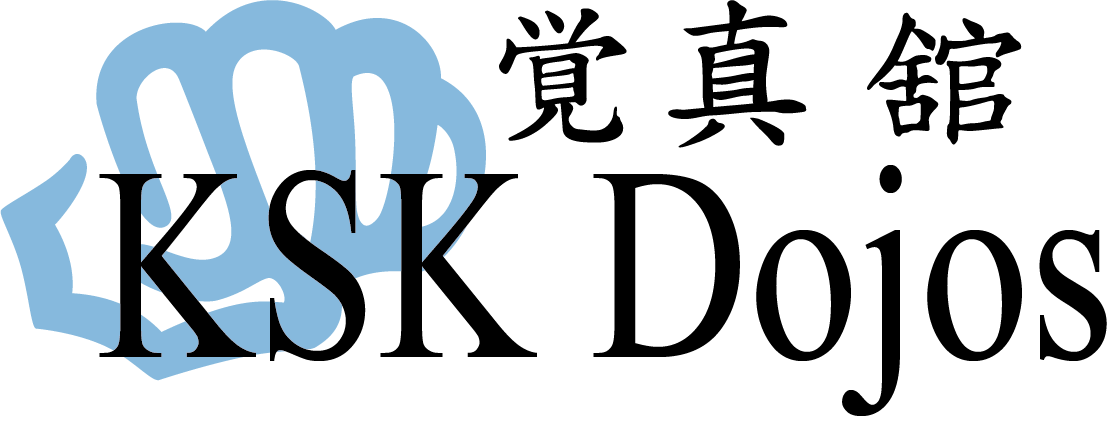Preparing for your Karate Grading.
This article has been written by Sensei Aaron Boscott, the Dojo instructor at our Croydon Dojo. Sensei Aaron has already more than 12 years experience teaching Karate to all age groups.
As a Karate practitioner, it is very easy to get overwhelmed with all the information, ideas and concepts given to students from their various Sensei’s and Sempai’s. The culture of our dojo embodies Effort, Spirit and Confidence - and it is the goal of every instructor to make you feel comfortable within this culture. My long-term aim for students is to learn key life skills and values that they can carry into their everyday life: Effort, Confidence, Respect, Discipline, Trust, Purpose, Awareness and Goal setting skills. Students will develop these over the course of their Karate journey, from white to black belt and beyond.
At Kakushinkan it takes approximately 5 years of training consistently, before attempting the start of the Black Belt preparation year. This may sound daunting to those students at the start of their journey, which is why we have the Kyu Grades System (Coloured Belts). This helps the Sensei’s gauge how far the student is in terms of their development and gives constant opportunities and targets for the students to strive for.
All your teachers have been through the same system.
Everyone you see in the dojo, was once a white belt.
CLASS STRUCTURE AND BELTS
Beginner/Novice Class: White Belt (10th Kyu), Red Belt (9th Kyu), Yellow Belt (8th Kyu), Orange Belt (7th Kyu)
Intermediate Class: Green Belt (6th Kyu), Blue Belt (5th Kyu), Purple Belt (4th Kyu)
Seniors Class: Junior Brown Belt (for Kids), 1 Stripe on Brown (3rd Kyu), 2 Stripes on Brown (2nd Kyu), 3 Stripes on Brown (1st Kyu), then finally Black Belt (Shodan-Ho).
Kakushinkan Shukokai follows the Japanese traditional 10 Kyu (level) belt system.
PROGRESSION THROUGH THE BELTS
For the Beginner and Novice Level students, we run gradings (assessments) every 3 Months. This is how you progress through the belts; it allows your Sensei to see how your skills have been developing and your improvement in between
assessments, and how we as your teacher can improve on your future development.
As you progress through the ranks, gradings will get longer as you get tested on the variety of techniques and skills you have accumulated throughout your time as a student. Preparing for a grading is easy when training regularly. Each belt has different levels of difficulty and challenges, but they are always covered in class, so consistency with your training is the key.
Gradings allow you to feel your own improvement.
Gradings encourage you to develop with your classmates.
WHAT YOU WILL BE ASSESSED ON IN GRADINGS:
Kihon (Basics): Stances and Movement, Strikes, Kicks and Blocks. There are some
set patters like the formal blocks and counter strikes. However, the Sensei running this section of the grading will look at topics covered over the last 3 months of training. This way the teacher can assess if Students have grasped the concepts shown during class.
Combinations: 1-5 A (White Belt) 1-10a (Red Belt), 1-5B (Yellow Belt), 1-5C
(Green Belt), 1-10C (Blue Belt), 1-5D (Purple Belt), 1-10D (Brown Belt)
Each Belt Learns 5 New Combos for the current level on top of the previous set(s).
Impact: This is about hitting a pad as hard as you can using correct technique, and
lots of effort.
Kata: Each new belt will learn a new form and show improvement on past Kata. Kata is where we develop our Karate technique, kids develop strength, and where we start teaching self defence basics.
Kumite (for 7 th Kyu Orange belt and up): Students will Spar a few rounds with their peers and show off their movement, strikes, blocks and kicks, all while demonstrating a sense of distance, timing and control.
Fitness: The way we look at and measure a student’s fitness in the grading is by
measuring the quality of techniques. If the individual’s technique and stances are not
to the same standard as earlier on the grading, that will show in the results.
Effort and Spirit: The Grading is a very loud and energetic environment. All
participants are trying to achieve their own goals. You need to stand out to show the
Sensei’s how much you want to have your new result. Hiding in amongst the group
hinders your chance to show off. There are always eyes watching. So always do
YOUR BEST.
By Grading we all learn how to take on board feedback.
Gradings help us focus on the next goal.
When it comes to preparing for the upcoming grading the best thing to do is train, ask questions, practice, and enjoy the process.
Encouraging your children to participate in the Grading process is a key part of developing their confidence. We use the grading system to teach the children how to cope with feedback from teachers. How to receive advice. Sometimes our children don’t get the results they hope for. The manner in which they learn to deal with feedback helps them build the confidence to bounce back and set achievable goals.
The grading system helps our children develop life skills applicable to all aspects of life.
To all Students, good luck with your future grading and see you in the dojo.
Oss.
Sensei Aaron.






